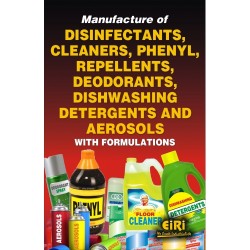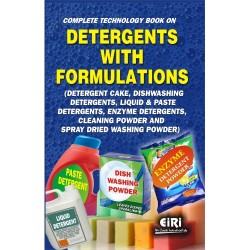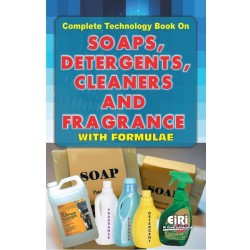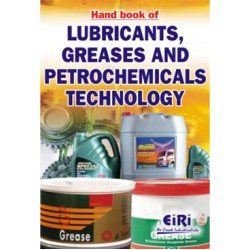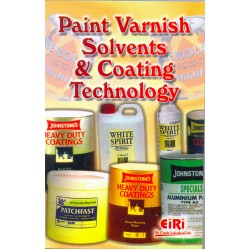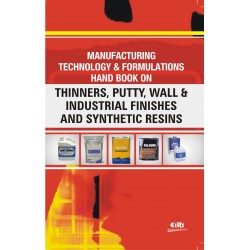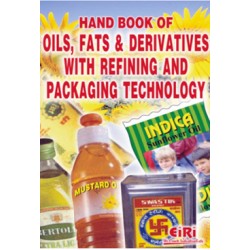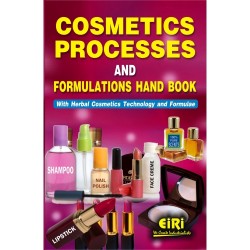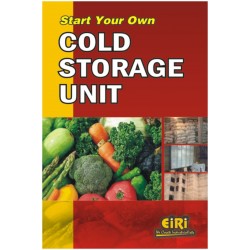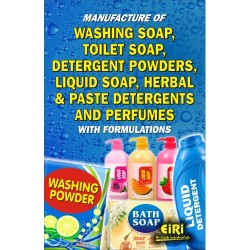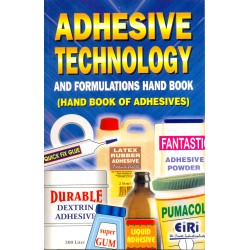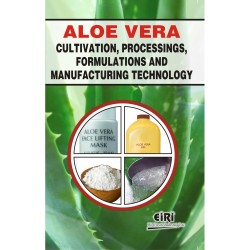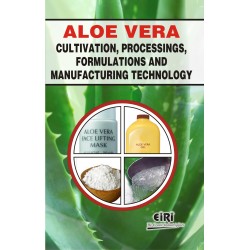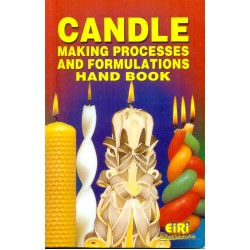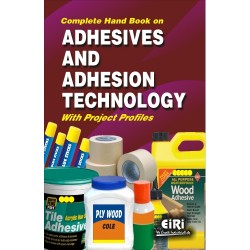hand book of synthetic detergents with formulations
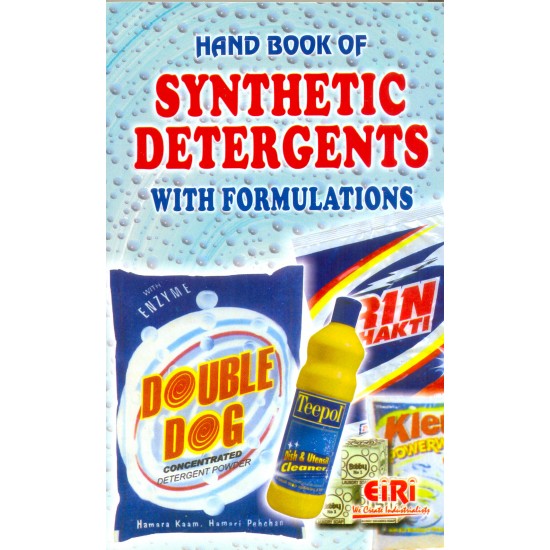
- More than 40 years of experience
- Managed by expert industrial consultants
- ISO 9001-2015 Certified
- Registered under MSME, UAM No: DL01E0012000
- 24/5 Research Support
Get your quesries resolved from an industry expert. Ask your queries before report or book purchase. - Custom Research Service
Speak to the our consultant to design an exclusive study to serve your research needs. - Quality Assurance
All reports are prepared by highly qualified consultants & verified by a panel of experts. - Information Security
Your personal & confidential information is safe & secure.
Contents Cum Subject Index of the Book
I. GROUPS OF Synthetic DETERGENTS :
1. Introduction
2. Classification
3. Anionic Detergents
4. Alkyl Aryl Sulphonates
5. Long-Chain (Fatty) Alcohol Sulphates
6. Sulphonated Olefins
7. Sulphated Monoglycerides
8. Sulphated Ethers
9. Sulphosuccinates
10. Sulphonated Methyl Esters
11. Alkane Sulphonates
12. Phosphate Esters
13. Alkyl Isethionates
14. Acyl Sarcosides
15. Alkyl Taurides
16. Fluoro Surfactants
17. Cationic Detergents
18. Non-ionic Detergents
19. Fatty Alcohol and alkyl Phenol Condensates
20. Fatty Acid Condensates
21. Condensation of Ethylene Oxide with an Amide
22. Block Polymers
23. Sucrose Esters
24. Sorbitan Esters
25. Alkylolamides
26. Fatty Amine Oxides
27. Amphoterics and Zwitterionics
28. Biodegradability
II. Synthesis OF DETERGENTS :
1. Introduction
2. Raw Materials for Anionic Synthetic Detergents
3. Fatty Alcohols, Natural and Synthetic
4. Olefins
5. Alpha Olefins
6. Linear Internal Olefins
7. Normal Paraffins
8. Alkyl Benzene
9. Methyl Esters
10. Sulphonation of Detergent Raw Materials
11. The Inorganic Raw Materials for Sulphonation
12. Sulphuric Acid and Oleum (Fuming Sulphuric Acid)
13. Sulphur Trioxide from Oleum Stripping
14. Sulphur
15. Chlorosulphonic Acid
16. Sulphamic Acid
17. Sulphonation with Sulphuric Acid and/or Oleum
18. Sulphonation with Sulphur Trioxide
19. Sulphonation Processes
20. Alpha Olefin Sulphonates (AOS)
21. Methyl Ester Sulphonates
22. Heavy Alkylate Sulphonates
23. Sulphonation with Chlorosulphonic Acid
24. Sulphation by Means of Sulphamic Acid
25. Sulphosuccinates and Sulphosuccinamates
26. Alkane (Paraffin) Sulphonates
27. Phosphate Esters
28. Non-ionic Detergents
29. Ethylene and Propylene Derivatives
30. Fatty Acid Alkanolamides
31. Cationic Detergents
32. Cationic Surtace Active Agents
33. Amphoteric Detergents
III. MANUFACTURE OF FINISHED DETERGENTS :
1. Introduction
2. Powder Detergents
3. Simple Absorption
4. Combined Absorption and Neutralisation
5. Dry Mixing of Powders
6. Spray-drying of Powders
7. Colour
8. Particle Size and Spread
9. Bulk Density
10. Residual Moisture
11. Stickiness
12. Product Uniformity
13. Separation of Powder
14. Wet Scrubbing
15. Use of Fines
16. Combination of Spray-dried and Dry-mixed Powders
17. Ballestra 'Combex' System
18. Patterson-Kelley System
19. Anhydro System
20. Drum-drying of Powders
21. Liquid Detergents
22. Toilet Preparations
23. Paste Detergents
24. Calcium Sulphonates
25. Solid Detergents
26. Detergents Toilet Bars
27. Household Scrub Bars
28. Fabric Softeners
29. Abrasive Cleaners
IV. FORMULATION AND APPLICATION OF DETERGENTS :
1. Introduction
2. Foam
3. Household Cleaning
4. Heavy-duty Laundering
5. Foam Control
6. Light-duty Household Products
7. General Purpose Detergents
8. Choice of Non-ionic
9. Concentrated Powders
10. Cold Water Washing
11. Hard-Surface Cleaners
12. Machine Dishwashing
13. Abrasive-type Cleaners
14. Miscellaneous Household Cleaners
15. Commerical Laundering
16. Solvent Detergents
17. Carpet and Upholstery Cleaners
18. Textile Dressing
19. Mercerizing
20. Food and Dairy Industries
21. Detergent Sanitisers
22. Metal Cleaners
23. Miscellaneous Cleaners
24. Lavatory Cleaner
25. Hand Cleansers
26. Waterless Hand Cleaners
V. PERFUMING OF SOAPS AND DETERGENTS :
1. Introduction
2. Types of Perfumes
3. Matching a Perfume
4. Formulation of Perfumes in Soap Compounds
5. Antiseptic and Medicated Soaps
6. Perfuming Boxes
VI. TESTING OF SOAPS AND DETERGENTS :
1. Introduction
2. Test Methods
3. Statistical Presentation of Data
4. Radioactive Tracer Technique
5. Water Hardness
6. Screening Tests
7. Acid Stability
8. Acid Stability test Method
9. Alkali Stability and Solubility in-Caustic Soda Solutions
10. Test method-Alkali Stability
11. Test Method-Solubility
12. Stability toward Metallic Lons
13. Test Method
14. Surface and Interfacial Tension Values and Spreading Coefficient
15. Surface Tension
16. Interfacial Tension
17. Surface Active Agents
18. Test Method
19. Lime Soap Dispersion
20. Test, Method
21. Practical Wetting Tests
22. Test Method : Draves-Clarkson Test
23. Canvas Disk Test Method
24. Rewetting Test
25. Test Method
26. Lather Values
27. Test Method : Ross-Miles Pour Foam Test
28. Solubility-Organic Solvents
29. Test Method
30. Cotton Washing
31. Water Hardness
32. Machines
33. Standard Cotton Soil Fabric Preparation
34. Fabric Choice
35. Desizing
36. Soil
37. Soiling Machine
38. Soil Storage
39. Evaluation of Washed Swatches
40. Standardization of Solid Fabric Testing
41. Cotton Wash Test Methods
42. Deter-Meter Test Method
43. Conventional Washer Method
44. Practical Wash Tests
45. Home Laundering
46. Sea Water Detergency Tests
47. Detergency Methods
48. Redeposition
49. General Methods
50. Redeposition Test Procedure
51. Wool Washing
52. Raw Wool Scouring
53. Continuous Scouring of Raw Grease Wool
54. In-Process Scouring
55. Soiled Suspension
56. Soiled Fabric Preparation
57. AATCC Detergency Comparator
58. Test Method
59. Finished Fabric Scouring
60. Wash Test Method
61. Washing Procedures for other Fibres
62. Dry Cleaning
63. Shampoos
64. Detergency Method
65. Lather-Shampoo
66. Hard Surface Cleaning
67. Metal Cleaning
68. Performance Tests
69. Surfaces
70. Soils
71. Machines for Removal
72. Sample
73. Estimation of Soil Removal
74. Dishwashing
75. Soil
76. Measurement of Soil Retention (or removal)
77. Machines for Washing
78. Miscellaneous Tests
79. Brightening Agents
80. Evaluation
81. Ph Determination
82. Proposed Method of Test for pH of Aqueous Solutions of Soaps and Detergents
83. Corrosion
VII. Manufacturing OF HERBAL SYNTHETIC DETERGENTS :
1. Performance Criteria
2. Washing Habits
3. Quality of Water
4. Soiling
5. White vs. Coloured Clothes
6. Manufacturing Facilities
7. Safety and Pleasant 'in-use' Qualities
8. Colour, Odour and Flow Characteristics
9. Shelf Life
10. Pricing
11. Formulation Requirements
12. Alkalinity
13. Good Building and Active Matter
14. Approach to Product Formulation
15. Production Procedure
16. Formulations of Synthetic Detergent Powders
17. Detergent Powder Prepared Without Using Spray Dryer (High Bulk Density)
18. Procedure
19. Foam Regulation
20. Typical Suds Regulated Surfactant Compounds
21. Woollen Piece Goods Scouring-Preparation
22. Scouring Powders Including Kitchen Cleaners
23. Abrasives
24. Surfactants
25. Other Chemicals
26. Soap Powder
27. Manufacturing Process
28. Standards
VIII. DETERGENTS BARS :
1. Introduction
2. Requirements of a Detergent Bar
3. NSD Bar Vs. Soap
4. Components of Detergent Bars
5. Active Detergent
6. Sodium Tripolyphosphate
7. Talc
8. Starch
9. China Clay
10. Calcite
11. Soda Ash
12. Sodium Sulphate
13. Sodium Silicate
14. Coconut Mono Ethanolamide
15. Soapstock
16. Dicalcium Phosphate
17. Rosin
18. Titanium Dioxide
19. Colour
20. Fluorescer
21. Perfume
22. Water
23. Processing of NDC Bars
24. Handling of Raw Materials
25. Processing
26. Process Control
27. Some Typical Formulations of Detergent Bar
28. Plant & Machinery for Small Scale Detergent
29. cake Manufacture
30. Kneader
31. Milling Machine
32. Plodder
33. Bar Cutter or Billet Cutter
34. Embossing or Stamping Machine
35. Pulverizer
IX. HERBAL LIQUID AND PASTE DETERGENTS :
1. Requisites of Surfactants for Formulating Liquid Detergents
2. Surfactants Most Commonly Used
3. Builders
4. Viscosity Controllers
5. Other Ingredients
6. Household Liquid Detergents for Laundering
7. Heavy Duty
8. Manufacture of Paste Detergents
9. Formulations of Liquid and Paste Detergents
10. Heavy Duty Liquid Detergents
11. Light Duty Detergents
12. Liquid Shampoo
13. Procedure
14. Light Duty : (for silk, wool etc.)
15. Typical Formulations
16. Procedure
17. Shampoos
18. Rug Cleaning Liquid Detergent Formulations
19. A Recommended Formulation
20. Heavy-duty Liquid Detergents
X. ACID SLURRY BY MANUAL PROCESS :
1. Raw material Requirements
2. Process of Manufacture
3. Plant Economics
4. Plant & Machinery
5. Fixed Capital
6. Raw Materials
7. Total Working Capital/Month
8. Total Capital Investment
9. Turn Over/Annum
XI. DETERGENTS (ANIONIC) :
1. Manufacturing Process
2. Formulations (Paste)
3. Formulation
4. Process
5.Process Flow Sheet for the Manufacture of Detergent Liquid/Paste
XII. DETERGENT WASHING POWDER (ARIEL TYPE) :
1. Higher Grade/Quality Ariel Type Detergent Powder
2. Ariel Detergent (Higher Grade)
3. Process
4. Plant Economics
5. Plant & Machinery
6. Fixed Capital
7. Raw Materials
8. Total Working Capital/Month
9. Total Capital Investment
10. Turn Over/Annum
XIII. SYNTHETIC DETERGENT (BLUE POWDER) :
1. Formulation for Blue Washing Powder
2. List of Conventional Builders and Additives
3. Process of Manufacture
4. Compounding of Ingredients
5. Process of Manufacture
6. The Spray Drying Process
7. Atomization
8. Treatment of the Powder after the Tower
9. Plant Economics
10. Plant & Machinery
11. Fixed Capital
12. Raw Materials
13. Total Working Capital/Month
14. Total Capital Investment
15. Turn Over/Annum
XIV. DETERGENT CAKE (NIRMA TYPE) :
1. Detergent Cake Formula and its Manufacture
2. Formulation
3. Formulation of Detergent Cakes Used
4. Plants Economics
5. Plant & Machinery
6. Fixed Capital
7. Raw Materials
8. Total Working Capital/Month
9. Total Capital Investment
10. Turn Over/Annum
15 CLEANING POWDER :
1. Manufacturing Process
2. Formulations
3. Plant Economics
4. Plant & Machinery
5. Fixed Capital
6. Raw Materials
7. Total Working Capital/Month
8. Total Capital Investment
9. Turn Over/Annum
XVI. DETERGENT CAKE & POWDER :
1. Detergent Cake Formula and its Manufacture
2. Formulation
3. Manufacturing Process
4. Starting Material for Organic Compound
5. Process of Manufacture of Synthetic Detergent Powder
6. Plant Economics
7. Plant & Machinery
8. Fixed Capital
9. Raw Materials
10. Total Working Capital/Month
11. Total Capital Investment
12. Turn Over/Annum
XVII. LAUNDRY & DRY CLEANERS :
1. Laundering Process
2. Plant Economics
3. Plant & Machinery
4. Fixed Capital
5. Raw Materials
6. Total Working Capital/Month
7. Total Capital Investment
8. Turn Over/Annum
XVII. LIQUIDTOILET CLEANER (HARPIC TYPE) :
1. Formulation of Liquid Toilet Cleaner (Harpic Type)
2. Process of Manufacture of Liquid Toilet Cleaner (Harpic Type)
3. Plant Economics
4. Plant & Machinery
5. Fixed Capital
6. Raw Materials
7. Total Working Capital/Month
8. Total Capital Investment
9. Turn Over/Annum
XIX. ACID SLURRY (L.A.B.) :
1. Typical Quality of LAB
2. Manufacturing Process Details for Acid Slurry
3. Reaction carried out as given below
4. Batch Sulphonation Process
5. Continuous Sulphonations Process
6. The Process can be divided into four Stages
7. Plants Economics
8. Plant & Machinery
9. Fixed Capital
10. Raw Materials
11. Total Working Capital/ Month
12. Total Capital Investment
13. Turn Over/Annum
XX. NEROL LAUNDRY SOAP :
1. Laundry Soaps V/S Mixed Soap Detergent Laundry Bar
2. Formulation
3. Manufacturing Process of Laundry Soap from Soap Flakes
4. The First Bring Change
5. The Second Bring Change
6. The Finish
7. Crutching and Filling
8. Cooling Frames
9. Slabbing and Cutting
10. Drying and Packing
11. Plant Economics
12. Plant & Machinery
13. Fixed Capital
14. Raw Materials
15. Total Working Capital/Month
16. Total Capital Investment
17. Turn Over/Annum
XXI. LIQUID DETERGENTS FOR WOOL :
1. Manufacturing Process
2. Formulations for Liquid Detergent for Wool
3. Cold Water Wool Detergents
4. Plant Economics
5. Plant & Machinery
6. Fixed Capital
7. Raw Materials
8. Total Working Capital/Month
9. Total Capital Investment
10. Turn Over/Annum
XXII. LAUNDRY FOR CLOTHES WASHING :
1. Laundering Process
2. Inspection and Mending
3. Stain Removal
4. Steeping
5. Washing
6. Rinsing
7. Wringing
8. Blueing and Starching
9. Drying
10. Damping and finishing
11. Plant Economics
12. Plant & Machinery
13. Fixed Capital
14. Raw Materials
15. Total Working Capital/Month
16. Total Capital Investment
17. Turn Over/Annum
XXIII. NIRMA TYPE DETERGENT POWDER :
1. Process of Manufacture
2. Plant Economics
3. Plant & Machinery
4. Fixed Capital
5. Raw Materials
6. Total Working Capital/Month
7. Total Capital Investment
8. Turn Over/Annum
XXIV. NON-IONIC LIQUID DETERGENTS :
1. Formulation
2. Process of Manufacture
XXV. DETERGENT PASTE (TEXTILE GRADE) :
1. Formulation of Detergent Paste (Textile Grade)
2. Manufacturing Processe of
3. Detergent Paste (Textile Grade)
4. Plants Economics
5. Plant & Machinery
6. Fixed Capital
7. Raw Materials
8. Total Working Capital/Month
9. Total Capital Investment
10. Turn Over/Annum
XXVI. SPRAY DRIED DETERGENT POWDER :
1. Formulation
2. Typical Formulation Selected for the Process
3. The Spray Drying Process
XXVII. WASHING & LAUNDRY SOAP :
1. Advantages of Detergent Laundry Bar over Traditional Laundry Soaps
2. Formulation of Washing Soap
3. Formulation of Laundry Soap (Combination Toilet Bar Soap)
4. Manufacturing Process of Washing Soap
5. Plant Economics
6. Plant & Machinery
7. Fixed Capital
8. Raw Materials
9. Total Working Capital/Month
10. Total Capital Investment
11. Turn Over/Annum
XXVIII. ZEOLITE-A MANUFACTURING (DETERGENT GRADE) :
1. Manufacturing Process
2. Material Balance for Zeolite-A Production (By Hydrogel Process)
3. Plant Economics
4. Plant & Machinery
5. Fixed Capital
6. Raw Materials
7. Total Working Capital/Month
8. Total Capital Investment
9. Turn Over/Annum
XXIX. DETERGENTWASHING POWDER (SURF EXCEL TYPE) :
1. Surf Excel Type Detergent Powder-Formulation
2. Process
3. Plant Economics
4. Plant & Machinery
5. Fixed Capital
6. Raw Materials
7. Total Working Capital/Month
8. Total Capital Investment
9. Turn Over/Annum
XXX. DETERGENT POWDER PLANTS-DRY MIX PROCESS :
1. Manufacturing Process
2. Basic Raw Materials
3. Packaging
4. Man Powder Required
5. Electricity Required
6. Area required (for Plant and Machinery)
7. Water required (for Production Purpose)
8. Effluents
XXXI. LAUNDRY SOAP MANUFACTURING PLANT :
1. Manufacturing Process
2. Raw Materials Required
3. Packing Materials
4. Manpower Required
5. Water Consumption
6. Effluents
7. Area Requirement
8. Electricity Required
XXXII. TOILET (BATH) SOAP FINISHING LINE :
1. Capacities Available
2. Product
3. Manufacturing Process
4. Raw Material Required
5. Packing Material
6. Manpower Required
7. Water Consumption
8. Effluents
9. Area Requirement
10. Electricity Requirement
XXXIII. DETERGENT CAKE MANUFACTURING PLANTS :
1. Capacities Available
2. Product
3. Manufacturing Process
4. Raw Material
5. Packing Material
6. Manpower Required
7. Water Consumption
8. Effluents
9. Area Requirement
10. Electricity Requirement
XXXIV. SUPPLIERS OF RAW MATERIALS
XXXV. SUPPLIERS OF PLANT & MACHINERY :
1. Detergent Plant Suppliers
2. Laundry & Dry Cleaning Plant Supplier
3. Storage Tanks
4. Spray Dryers
5. Mixers
6. Weighing Machines
7. Homogenisers
8. Powder Filling Machine
XXXVI. PRESENT MANUFACTURERS
XXXVII. PACKAGING :
1. Pouch Packaging Services
2. Packaging Machines for Detergents
Preface
The Book 'Hand Book of Synthetic Detergents with Formulations' covers Principle Groups of Synthetic Detergents, Manufacturing Technologies with Formulae to produce Detergents. The main chapters of the book are Groups of Synthetic Detergents, Synthesis of Detergents, Manufacture of Finished Detergents, Formulation and Application of Detergents, Perfuming of Soaps and Detergents, Testing of Soaps and Detergents, Manufacturing of Herbal Synthetic Detergents, Detergent Bars, Herbal Liquid and Paste Detergents, Acid Slurry By Manual Process, Anionic Detergents, Detergent Washing Powder (Arial Type), Blue Detergent Powder, Cleaning Powder, Laundry and Dry Cleaners Liquid Toilet Cleaners (Harpik Type), Acid Slurry (L.A.B.) Nerol Laundry Soap, Liquid Detergents for Wool, Laundry for Clothes Washing, Nirma Type Detergent Powder, Non-Ionic Liquid Detergents, Detergent Paste (Textile Grade), Washing and Laundry Soap, Zeolite-A (Detergent Grade), Detergent Powder Plants- Dry Mix Process, Laundry Soap, Bath Toilet Soap Finishing Line, Detergent Cake Plants, Suppliers of Raw Materials, Suppliers of Plant and Machinery, Present Manufacturers, Packaging Addresses,
Hope, the book will undoubtedly help the new entrepreneurs as well as well established industrialists.
How to Make Project Report?
Detailed Project Report (DPR) includes Present Market Position and Expected Future Demand, Technology, Manufacturing Process, Investment Opportunity, Plant Economics and Project Financials. comprehensive analysis from industry covering detailed reporting and evaluates the position of the industry by providing insights to the SWOT analysis of the industry.
Each report include Plant Capacity, requirement of Land & Building, Plant & Machinery, Flow Sheet Diagram, Raw Materials detail with suppliers list, Total Capital Investment along with detailed calculation on Rate of Return, Break-Even Analysis and Profitability Analysis. The report also provides a birds eye view of the global industry with details on projected market size and then progresses to evaluate the industry in detail.
We can prepare detailed project report on any industry as per your requirement.
We can also modify the project capacity and project cost as per your requirement. If you are planning to start a business, contact us today.
Detailed Project Report (DPR) gives you access to decisive data such as:
- Market growth drivers
- Factors limiting market growth
- Current market trends
- Market structure
- Key highlights
Overview of key market forces propelling and restraining market growth:
- Up-to-date analyses of market trends and technological improvements
- Pin-point analyses of market competition dynamics to offer you a competitive edge major competitors
- An array of graphics, BEP analysis of major industry segments
- Detailed analyses of industry trends
- A well-defined technological growth with an impact-analysis
- A clear understanding of the competitive landscape and key product segments
Need Customized Project Report?
- Ask for FREE project related details with our consultant/industry expert.
- Share your specific research requirements for customized project report.
- Request for due diligence and consumer centric studies.
- Still haven't found what you're looking for? Speak to our Custom Research Team
About Engineers India Research Institute:
Note: We can also prepare project report on any subject based on your requirement and country. If you need, we can modify the project capacity and project cost based on your requirement.
Our Clients

Our Approach
- Our research reports comprehensively cover Indian markets (can be modified as per your country), present investigation, standpoint and gauge for a time of five years*.
- The market conjectures are produced on the premise of optional research and are cross-accepted through associations with the business players
- We use dependable wellsprings of data and databases. What's more, data from such sources is handled by us and incorporated into the report
Why buy EIRI reports?
- Our project reports include detailed analysis that help to get industry Present Market Position and Expected Future Demand.
- Offer real analysis driving variables for the business and most recent business sector patterns in the business
- This report comprehends the present status of the business by clarifying a complete SWOT examination and investigation of the interest supply circumstance
- Report gives investigation and top to bottom money related correlation of real players/competitors
- The report gives gauges of key parameters which foresees the business execution






















